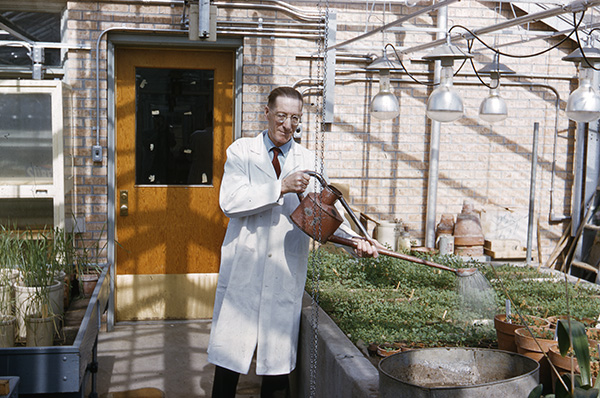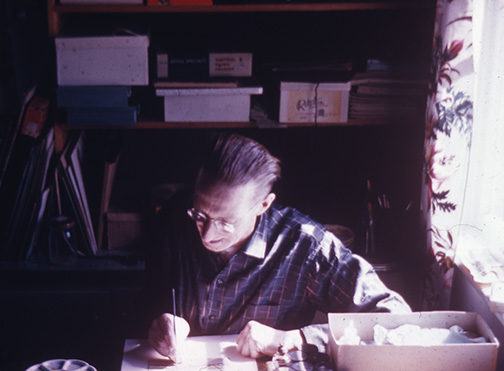Biography of Robert Newton Hurley
Robert Newton Hurley was born in London, in March of 1894. He left school after grade 6, and went to work at various jobs in England, including that of apprentice printer-compositor. After serving in the Suffolk regiment from 1917-1920 Hurley immigrated to Canada in 1923. He made his way west following the itinerant work on the farms, and in mills, and lumber camps of Saskatchewan.
The depression years of the 1930s put an end to readily available work for men like Hurley. In his spare time he began to draw, scrounging for materials : using beet juice, berry juices, and local clays for color. In the early 30s he attended some night school classes in art, and came to the attention of Saskatoon's small art community, including Ernest Lindner. Largely self-educated, he had developed a mature sense of colour, space, and light in his uncluttered watercolours.

From 1942 to 1958 Hurley worked at the Dominion Plant Pathology Laboratory on the University of Saskatchewan campus. Hurley and his family, wife Isabella and children Charles and Alice, moved to Sutherland where they were able to purchase a house. It was, at that time, still a largely rural community, with its own elevators, and freight sheds sitting in the middle of wide open fields, and easy access to the broad valley of the South Saskatchewan. Hurley's house faced the university plots and he took many photographs of this beautiful view.
His watercolors were now bringing him repute as an artist. People began seeking him out, and sales of his paintings began to provide a small income. From 1958 to 1960 Hurley was given a grant from the Government of Saskatchewan that allowed him to paint full time as a professional artist. In 1975 the University of Regina conferred an honorary LLD on Hurley in recognition of his contribution to Canadian art. In the 60's Robert Hurley and his wife retired to Victoria, B.C., where he remained until his death in 1980.

Although Hurley painted all types of western landscapes, as well as experimental and abstract works, the subjects of small towns, elevators, fences, and the countryside's common objects became his trademark.
Sources used in creating this bibliography include Jean Swanson's book Sky Painter: The Story of Robert Newton Hurley as well as from primary source documents held in the R.N. Hurley collection (University of Saskatchewan, University Archives and Special Collections, MG 482).

